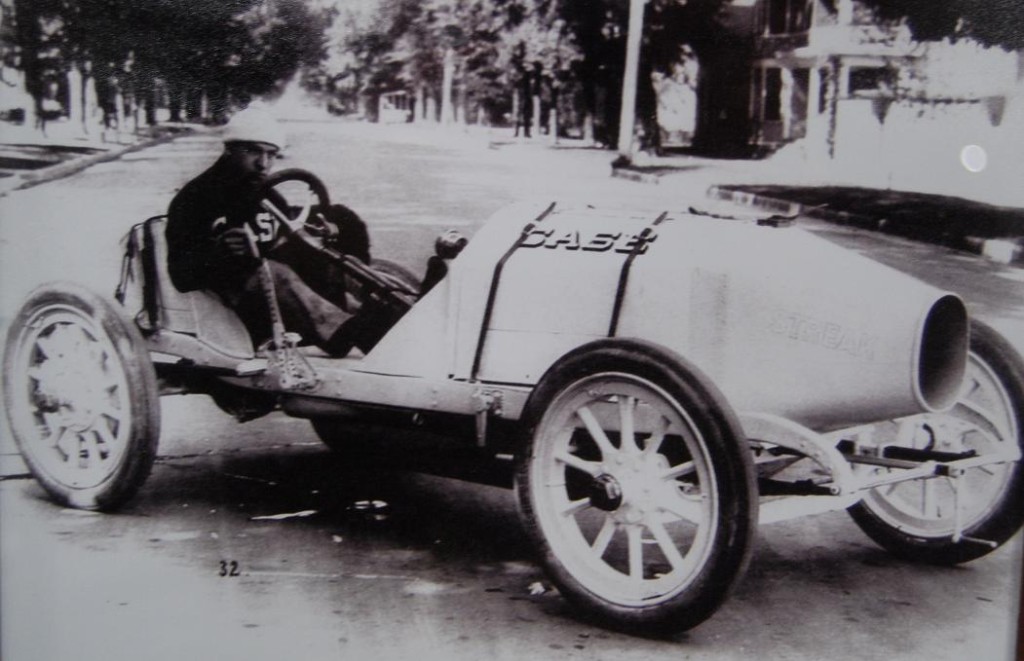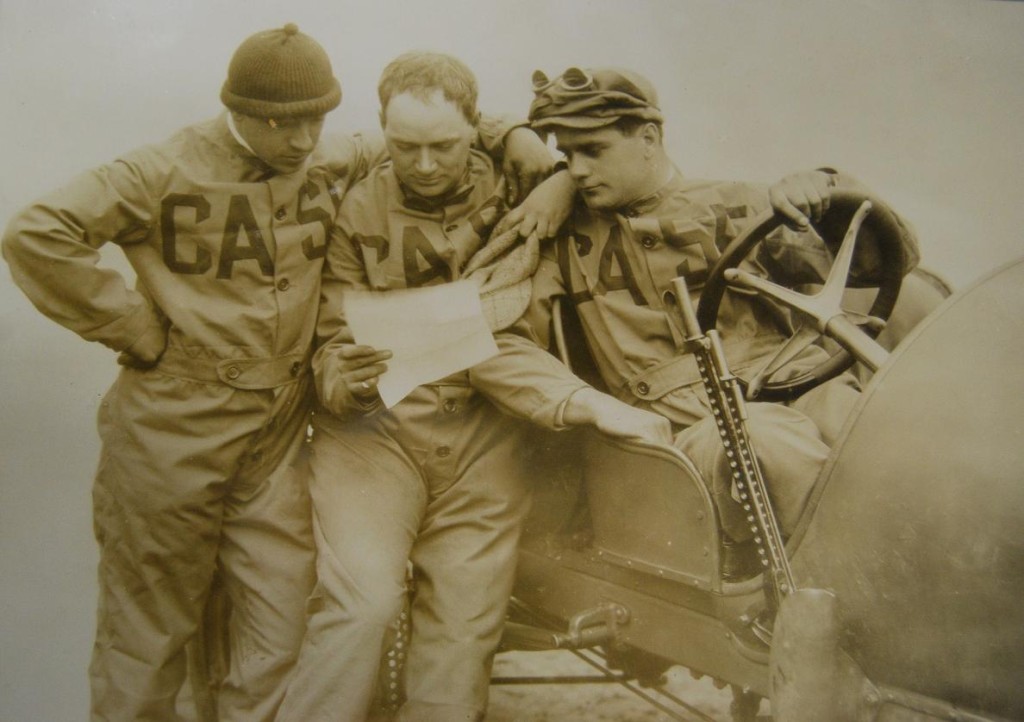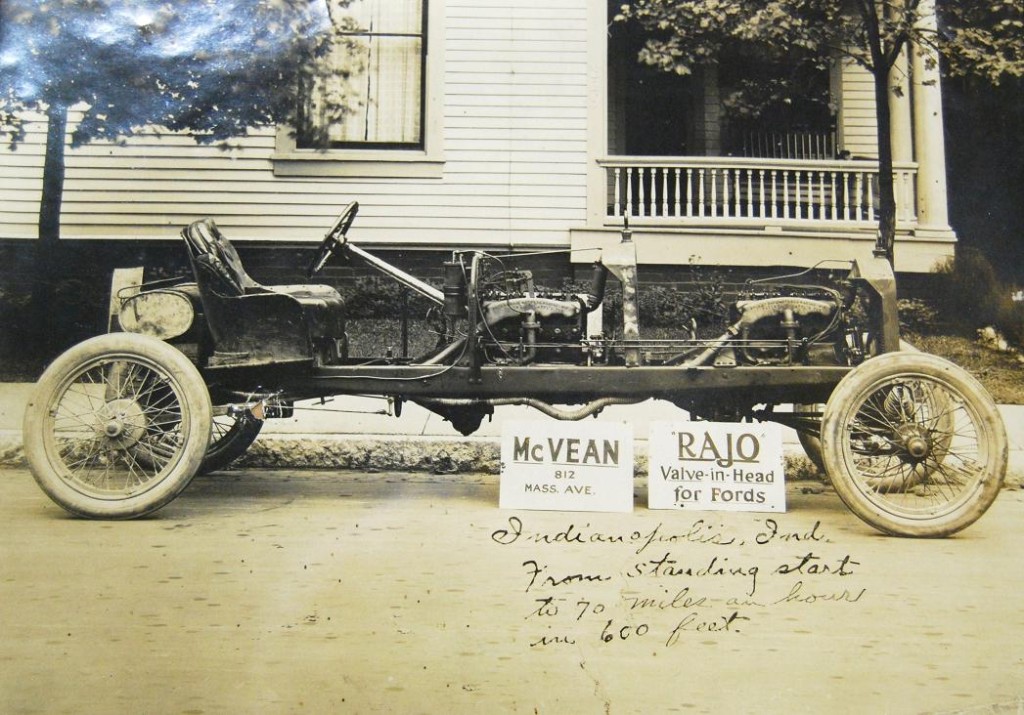

Joseph W. Haas is restoring a ‘51 Chevy with vintage Rajo speed equipment. The car is special to him; his grandfather was Joseph W. Jagersberger, an early racing driver from Racine, Wis. who competed against Louis Chevrolet. Friends called him ‘Racine Joe’—or ‘Rajo’ for short.
Jagersberger was born Feb. 14, 1884 in Vienna, Austria. He went to high school and junior college before becoming an apprentice at Mercedes. Jagersberger worked as an automobile demonstrator and public relations man. He began racing in France in 1897. In 1903, John J. Astor (wealthiest man to go down on the Titanic) brought Jagersberger to the United States. He built one of the first racecars in this country for Astor. Later, he did the same for Harry Harkness of Standard Oil Co. and for copper baron named McCoy.
On June 19, 1904, Jagersberger competed in a timed race from Boston to New York City. In 1911, he joined J.I. Case Co. in Racine. In addition to working on Case passenger cars, he built four racing cars. One ran in the first Indy 500, but didn’t finish. Jagersberger lost a leg in a serious racing accident in South Carolina in 1911, but remained a car enthusiast. In 1914, he formed Rajo Mfg. Co. Rajo’s first products included spark plugs, a water pump and an oil level gauge for Model T Fords. The company also made racing parts.

In 1918, Jagersberger manufactured and marketed the first Rajo cylinder head that converted a flathead engine into an overhead valve power plant. This led to engineering and consulting work for numerous people. The company’s Los Angeles salesman, Dewey Gatson, helped popularize the heads. Wisconsin native Harry Miller, who was building racing cars in Los Angeles then, was a customer.
Gatson was known as Rajo Jack and as Jack DeSoto. He was one of the first African American racing car drivers in America. He raced on the West Coast in stock cars, midgets, big cars and motorcycles. Gatson entered the West Coast Stock Car Hall of Fame in 2003 and the National Sprint Car Hall of Fame in 2007
Gatson souped up his own Model Ts with Rajo heads. In the early 1930s, Jagersberger named Gatson his Los Angeles dealer and salesman and “Rajo Jack” was born. Gatson raced in many venues and used many different engines.
During the 1930s and 1940s, there was an intense rivalry between cars with Rajo power and the Frontenacs that the Chevrolet brothers developed. Then, World War II came along. Racing was suspended and Rajo made parts for tractors, tanks and war goods built by Caterpillar, Cadillac and U.S. Rubber Co.

In 1949, Jagersberger designed a compound induction cylinder head for the 1941-1952 Chevrolet 216-cid in-line six. His modification to the famous Stivebolt six’s 15-bolt overhead valve cylinder head added another set of three intake ports above the three originals. This change permitted the addition of an multiple carburetion utilizing a separate intake manifold.
In total, Jagersberger made overhead-valve cylinder heads for around 4,000 Chevrolets and Fords before he passed away on Oct. 5, 1952. His company survived in Racine until 1980. On June 2, 2007, Racine Joe was inducted into the Sprint Car Hall of Fame in Knoxsville, Iowa.



Leave a Reply